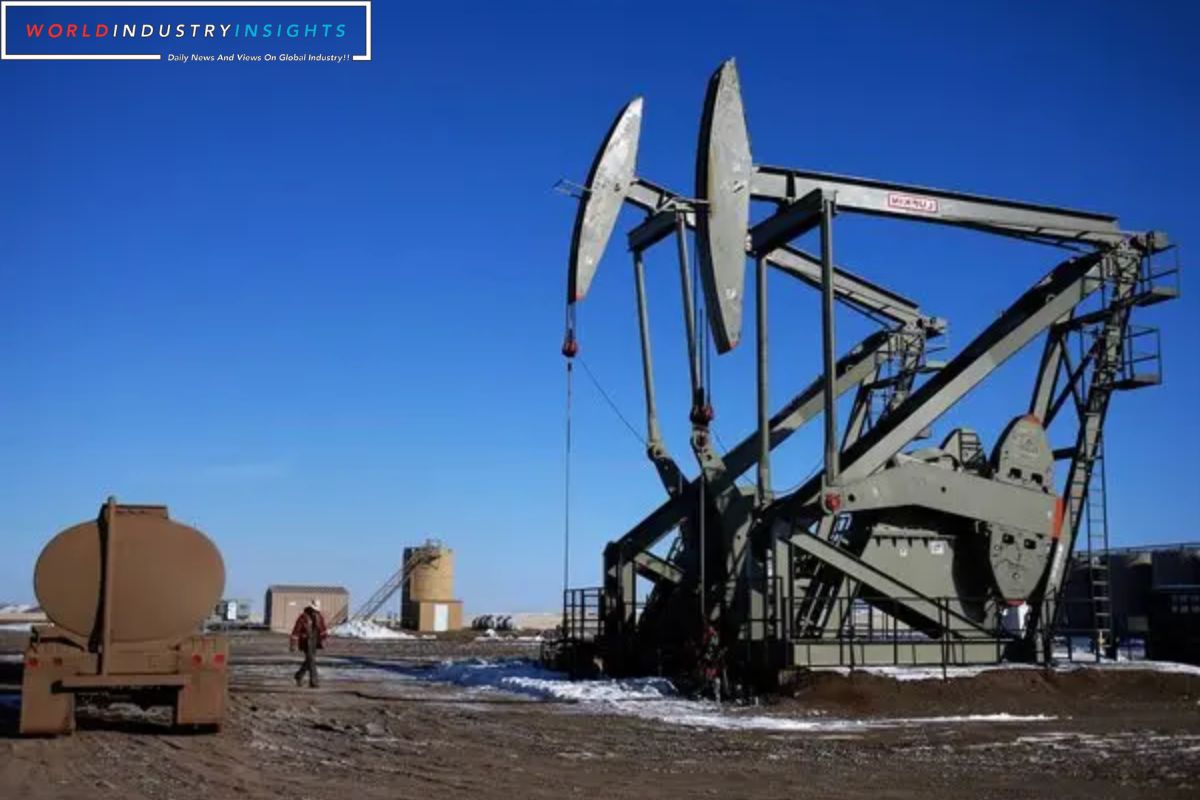Oil Prices Set to Close 2023: Amidst a backdrop of global uncertainties, the year 2023 concludes with a significant blow to the oil market as prices experience a 10% annual decrease. This decline, the largest in two years, reflects a tumultuous period characterized by a delicate balance between supply and demand, geopolitical tensions, and concerns over inflation.
As the year draws to a close, the prices of Brent Crude and WTI stand at their lowest levels since 2020, marking a worrisome trend for oil-producing nations and energy consumers alike.
However, this downward trajectory is not without its complexities, as various factors continue to shape the future outlook for oil demand in 2024.
Key Takeaways
- 2023 saw the first annual decline in oil prices in two years, with a contraction of 10%.
- Geopolitical tensions, production adjustments, and global efforts to curb inflation were contributing factors to the decline.
- The oil industry is facing a period of transition and adjustment, with unpredictable fluctuations in prices throughout the year.
- Despite concerns over shipping in the Red Sea and global measures to counter inflation, there was recent stability in oil prices.
Annual Oil Price Decline in 2023: A Two-Year First
The year 2023 marks a significant milestone in the oil industry, as it witnesses the first annual decline in prices in two years, signaling a shift in the global market dynamics.
After two years of consistent growth, the oil market experienced a 10% contraction in prices, a dramatic change that has caught the attention of industry experts and investors alike. This decline can be attributed to various factors, including geopolitical tensions, production adjustments, and global efforts to curb inflation.
Also Read: Oil Prices in a Tango of Hope: Weekly Gains Spark as IEA Optimism Meets a Dollar on the Wane
Throughout the year, oil prices displayed unpredictable fluctuations, creating a sense of uncertainty and volatility in the market. As we analyze the reasons behind this annual decline, it becomes clear that the oil industry is facing a period of transition and adjustment, paving the way for a new era in global energy markets.
Year-End Prices: Brent Crude and WTI Stand at Lowest Levels Since 2020
As the year comes to a close, it is evident that the oil market has reached a significant turning point, with Brent Crude and WTI standing at their lowest levels since 2020.
The final trading day of the year saw Brent crude futures at $77.33 a barrel, experiencing a marginal 0.2% increase. Meanwhile, U.S. West Texas Intermediate (WTI) crude futures traded at $71.88 a barrel, with a modest 11-cent uptick in early Asian trade.
These year-end prices reflect the impact of pandemic-induced demand shocks that have plagued the oil market over the past two years. Global uncertainties, including concerns over new COVID-19 variants and geopolitical tensions, have contributed to the downward pressure on oil prices.
As we look ahead to 2024, it will be crucial to monitor these factors and their potential impact on the oil market.
Third Consecutive Month of Decline: Demand Concerns Overshadow Supply Risks
Amidst mounting concerns about demand overshadowing supply risks, oil prices have experienced a third consecutive month of decline. Despite production cuts and geopolitical tensions in the Middle East, the downward trajectory of prices has persisted. This decline raises questions about the delicate balance between supply and demand in the global oil market.
Here are some key points to consider:
- Demand worries: The decline in oil prices can be attributed to growing anxieties about weakening global demand. Factors such as slowing economic growth, trade tensions, and the rise of renewable energy sources have all contributed to this concern.
- Supply risks: While demand concerns have taken center stage, it is essential not to overlook the potential risks to supply. Ongoing conflicts in the Middle East, particularly the tension between the United States and Iran, have the potential to disrupt oil production and exports.
- Production cuts: Despite efforts by major oil-producing countries to curb production and stabilize prices, these cuts have not been enough to counterbalance the downward pressure from demand worries.
- Future outlook: As we move into the new year, it will be crucial to closely monitor the interplay between supply and demand dynamics. Any further deterioration in global economic conditions or escalation in geopolitical tensions could continue to weigh on oil prices.
Recent Stability Amidst Shipping Concerns and Inflation Measures
Recent stability in oil prices has been observed despite concerns over shipping in the Red Sea and the implementation of global measures to counter inflation.
The recent 3% dip in oil prices, attributed to heightened concerns about shipping in the Red Sea, has not disrupted the overall stability of the market. Major shipping companies have altered routes due to the Houthi militant group targeting vessels in the region.
However, the role of global measures by governments and central banks to counter inflation has acted as a check on oil prices and swiftly mitigated potential spikes. These measures have provided reassurance to investors and helped maintain stability in the oil market.
Despite the ongoing shipping concerns and inflation measures, the oil market has remained resilient, indicating a robust and adaptable industry.
Future Outlook: Factors Influencing Oil Demand in 2024
Looking ahead to 2024, several factors are expected to influence oil demand, according to investors and analysts. These factors have the potential to stimulate oil consumption and drive up demand in the coming year. Here are some key factors that will shape the oil market in 2024:
- Anticipated interest rate cuts: Lower interest rates can stimulate economic growth and increase consumer spending, which in turn boosts oil demand.
- Weaker dollar: A weaker dollar makes oil more affordable for countries that import oil, leading to an increase in demand.
- Geopolitical events: Ongoing geopolitical tensions and conflicts can disrupt oil supply and impact demand.
- Global economic forces: The overall health of the global economy, including factors such as GDP growth and trade policies, will influence oil demand in 2024.
As we move into the new year, it will be crucial to closely monitor these factors and their impact on oil demand.
Conclusion Of Oil Prices Set to Close 2023
The year 2023 witnessed a significant annual decrease of 10% in oil prices, marking a two-year first. The year-end prices for Brent Crude and WTI reached their lowest levels since 2020.
Despite concerns over supply risks, it was the decline in demand that overshadowed the market. However, amidst shipping concerns and inflation measures, the oil market displayed some stability.
Looking ahead to 2024, various factors will continue to influence oil demand, shaping the future of the industry.
Our Reader’s Queries
Will oil prices come down in 2023?
According to the latest Short-Term Energy Outlook (STEO) report, the US Energy Information Administration (EIA) predicts that the Brent crude oil spot price will rise to an average of $84/bbl in the first half of 2024. This is an increase from the average of $78/bbl in December 2023, and is attributed in part to the recent OPEC+ production cuts.
What is the crude oil prediction for 2023?
As per the December 2023 forecast, Brent crude oil is expected to have an average yearly price of 82.4 U.S. dollars per barrel in 2023. This is a decrease of almost 20 U.S. dollars from the previous year, which witnessed a significant rise in energy commodity prices due to the Russia-Ukraine war.
Are oil prices expected to go down?
The US Energy Information Administration has recently revised its crude price forecasts for 2024, predicting a decrease of 8 cents/b to $77.99/b for WTI and $82.49/b for Brent. The agency also anticipates a further decline in prices in 2025 due to an increase in production that surpasses demand.
What is the forecast for oil prices?
According to a recent survey of 34 economists and analysts, the average forecast for Brent crude in 2024 is $82.56. This is a decrease from the consensus of $84.43 in November. Interestingly, only one contributor predicted prices to exceed $90 in the coming year.




